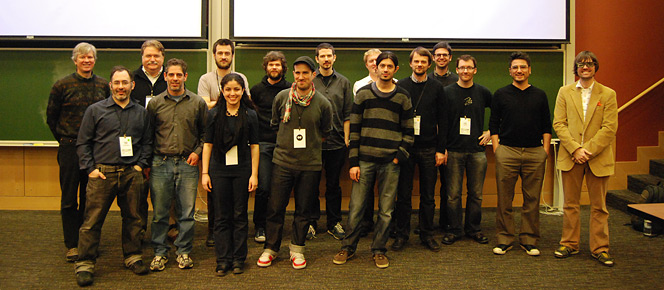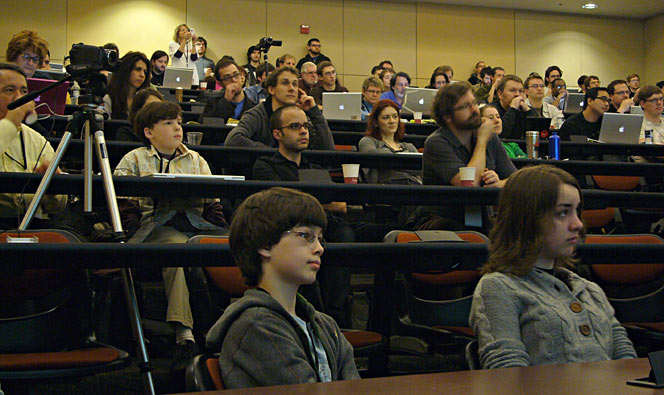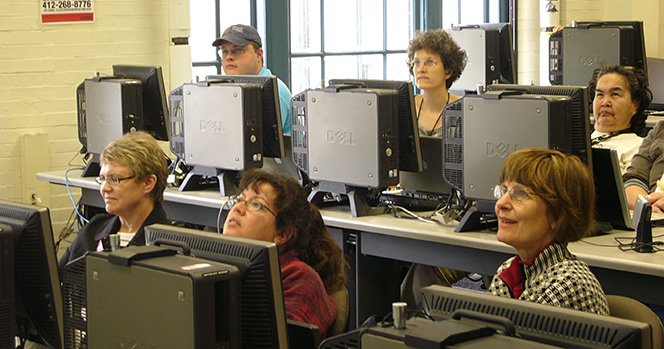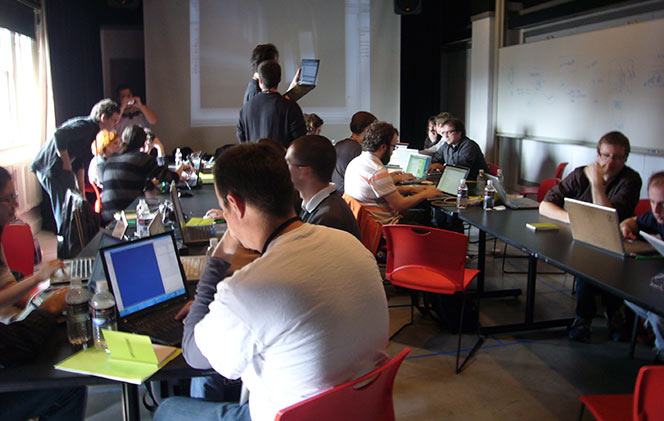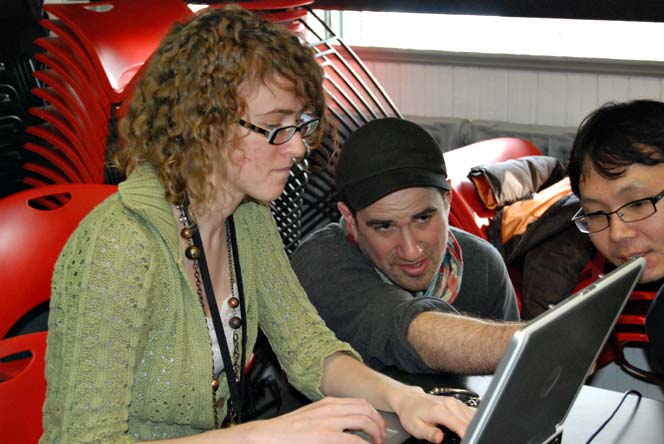Criteria for a Music School Head Search.
In early 2006, our School of Music was about to conduct a Head Search. Although my appointment at Carnegie Mellon University is in the School of Art, and not within the School of Music, I was nonetheless concerned for the outcome of the search, and so I drafted the following letter to a friend of mine who teaches in the department, offering (or venting) my opinions. Recently I was reminded of this letter during a conversation with another friend at a different school, where a Head Search is underway, and so I have decided to share this letter with the public. What follows is a litmus test, of sorts, for the kind of hopefully progressive thinking I would expect from the Chair or Head of a contemporary music school or conservatory.
This article focuses specifically on the issue of tolerance for curricular content and does not address other aspects of a good department Head (management and fundraising skills, etc.). For that reason, this article could also be entitled “A partial curriculum for a 21st Century music school.“
– – – – – – – – – –
Dear Professor X_________,
When we bumped into each other in the hallway recently, you were extremely gracious in your openness regarding my suggestions for the Head Search in the School of Music.
To whatever extent it could be helpful, I thought I’d put some of my thoughts to paper and codify some criteria that I would apply to a Music School Head Search process, were I to be involved in it.
My criteria are organized in the form of a timeline of musical forms. My litmus test? The “ideal candidate”, in my opinion, would be comfortable having courses taught in ANY of these musical forms, ALL the way down the list.
My observation is that many people active in music academies tend to draw a line in the sand — a line which represents the division between musical forms which they believe are worthy of “serious” consideration, and those which are not. My prediction is that the following list will provoke a great deal of ire among people who draw such distinctions. For all of those forms that they consider to be music, they might say, “Pshaw! Of course that is a serious and worthy subject; how arrogant to assume that I would not consider it such.” Then they will hit their line, and for all of those forms that come after, they might say, “Pshaw! there’s no way that form is legitimate; it is a fad, a gimmick, it’s barely music. Teach it here over my dead body.” I think we need a 21st-century Music School; the question is, at what point in this list will the new Head’s tastes be “frozen in time”? My hope is that the final candidate is open-minded enough to make it all the way down the following gauntlet.
– – – – – – – – – –
1912. The ideal candidate would be comfortable with the changes to Western orchestral music coincident with the birth of Modernism: Serialism and atonal forms, such as in the works of Stravinsky, Schoenberg, Berg, Webern.
1913. The ideal candidate would be comfortable with the innovations introduced by Luigi Russolo in his “Art of Noises” manifesto nearly a hundred years ago, and implemented in his intonarumori (“noise instruments”). Beyond having students merely read this seminal text, would the candidate see value in having students invent and perform their own noise instruments?
1922. Music from the African Diaspora. In 1922, the first Jazz recordings became available, and the first commercial radio station in the USA opened in Pittsburgh. The success of each was linked to the other. Since that time, Afro-Caribbean and African-American musics (Jazz, R&B, Rock, Hip-Hop, etc) have had an incalculable influence on the shape of modern music, both in and out of the academy. The ideal candidate would have an open-minded approach to teaching African-American social music histories, aesthetics, performance techniques, and even composition classes.
1929-1948. The ideal candidate would be comfortable in educating students to recognize the permeable boundary between “noise” and “music”, as further articulated by Edgard Varèse (“The Liberation of Sound“, 1936), Henry Cowell (“The Joys of Noise“, 1929) and Pierre Schaeffer in the notion of “musique concrete”.
1933. Film sound was introduced in 1928, and the first movie with a complete orchestral score, King Kong, was released in 1933. The ideal candidate would be open to recognizing that film music is a serious discipline in its own right, with distinct aesthetic, economic, and theoretic concerns. It is also the predominant way in which most people now experience long-format orchestral compositions, and (additionally) one of the last remaining sources of regular employment for orchestral musicians. Would the ideal candidate see value in music composition courses for film and television?
1953. How does the candidate feel about the revolutions to contemporary musics initiated by John Cage? To take a few examples, how about the use of aleatoric (indeterminate) and generative compositional techniques? What about visual (graphic) scores? Or the incorporation of ambient and environmental sounds, through both ‘tape’ musics and in live contexts? Again, I’m not just advocating book-teaching theoretics or histories; I mean: how would the candidate feel about an actual course in (for example) reading, creating and performing graphic scores? Or does the candidate feel that John Cage spoiled everything, similar to the way some visual artists prefer to ignore the revolutions introduced by Marcel Duchamp?
1956. Electronic music has been with us now for fifty years and through several generations of composers (Stockhausen, Boulez, Roads, Eno, and beyond). Electronic media have changed nearly every aspect of how music is experienced, documented, and distributed. The music studio, moreover, is not just a tool for recording performances by traditional instruments, but is a musical instrument in its own right. The ideal candidate would have a vision for the incorporation of electric, electronic, electroacoustic and acousmatic musics into the curriculum, in both performance and compositional contexts.
1960. Improvised musics. Whether influenced by baroque performance modes, “free jazz” musicians like Coltrane, Ornette Coleman, or John Zorn, or by more modern ‘academic’ composers like John Cage, Anthony Braxton or George Lewis, improvisation is an absolutely essential component of a contemporary music education. The ideal candidate would take a firm stand on incorporating improvisation into the curriculum.
1965. Popular musical forms. When professor Z________ recently taught a course on the music of the Beatles, the College deemed it so noteworthy (or controversial?) as to require its own press release. Is rock music really news? The ideal candidate would recognize the significance of such popular forms as a legitimate field of study, now that they have histories forty to fifty years long.
1970. Computer music continues to be a field of active research for more than three decades. Outside the laboratory, serious tools for interactive computer audio programming, such as Max/MSP, are now readily available and widely adopted by an entire generation of laptop musicians. An ideal candidate would have a vision for how pedagogy, performance and research in computer music could take a serious place among the topics of the School of Music. This seems especially crucial because of the School’s situation within Carnegie Mellon, proximal to one of the finest technical universities in the world. It would be a travesty to willfully ignore the unique opportunity of creating deep relationships with the Computer Science department.
1980-85. Music in the age of digital reproduction. The introduction, more than twenty years ago, of inexpensive audio sampling hardware and turntablism techniques ushered in a fundamentally new way of creating music: that of repurposing fragments from prior musics. Practitioners like Afrika Bambaataa, Eno/Byrne, Public Enemy, John Oswald (Plunderphonics), Chris Cutler, Christian Marclay, Craig Baldwin and many others have developed serious musical investigations into its possibilities, while the theoretical dialogue about the aesthetics and ethics of the practice has kept a vigorous pace. The debate is not going away, and the form is slowly becoming a widespread mode of computer-enabled music production, despite the RIAA’s displeasure. The ideal candidate would recognize the significance of this shift. It is easy to imagine the School teaching a “Contemporary Topics” course, perhaps taught in collaboration with the Business School and the Computer Science department, which dealt with the ethics of sampling and digital reproduction. But how would the candidate feel about a composition class, built entirely around plunderphonic modes of creation, which treated the ethics of musical debt as a component of practical training in the medium?
2000. Short musical forms. Today, many composers make a living designing complete compositions under four seconds long, for applications like computer operating systems, user interfaces, voicemail and telephony systems, and public address systems. The composition and creation of custom telephone ringtones is now a $10-billion-per-year industry, growing at 20% per year. And of course, commercial music has relied on the thirty-second spot for decades. Are our music students well-prepared to understand the extremely demanding musical logic of such short forms? The ideal candidate would recognize that composing such forms is not as easy as one might suppose. What about courses in the composition of short forms?
Hope this is helpful.
Sincerely,
Golan
2009 UPDATE 1. This list unjustly omits the study of world musics, particularly in relation to post-colonial national identities, musical hybrids, and mass media — mostly because, when I was writing this, I couldn’t identify a good date for this. So there’s another one.
2009 UPDATE 2. With the eclipse, sometime in 2007 or so, of the film and television industries by the game industry, I would also add the study of generative musics to this curriculum — i.e., algorithmic or generative ‘program’ music for interactive systems.
Keywords: criteria, desiderata, music, school, conservatory, search, hiring, tenure, promotion, evaluation, metrics, head, chair, director, position, pedagogy, teaching, standards.
